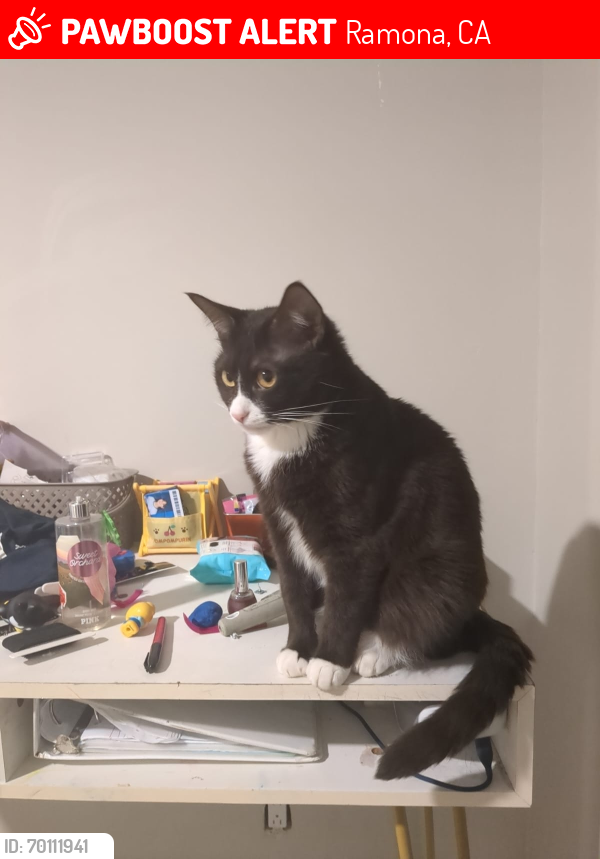Paul D.
1 month ago
Comprehensive Guide for Finding a Lost Cat
Research and hire a reputable Search and Rescue dog tracking team, Example Dogs Finding Dogs (DO NOT hire any team that will chase the cat or won’t let you come with the team). Look for Certified Search and Rescue teams with the extra training to find pets.
Behavior: Cats go into a fight or flight mode when outside, but usually stay within 200 yards. Your cat will typically hunker down very close to home. If you know where they got out, go 3-500 yards in both directions close to the house looking for small tight places they can hide. Sheds, garages, wood piles under decks, small holes, storm drains.
Utilize Video doorbells yours and neighbors baby video monitors and trail cameras to see when your pet is coming home.
They may or may not recognize their name or your face. They WILL recognize, in most cases, sounds or smells: the sound of a food can opening, favorite toy, etc. Take a moment and think of all the sounds that perk up their ears and make them come running to you. Record them on your smart phone and play them when tracking.
Indoor cats lost outside become active in the evening usually around 7pm-5am. The best times for you to actively search is between 11pm – 2am.
If it is safe to do so, leave a door or window slightly open at night put food and water near the door, also place a video monitor near. Again only if it is safe for you to do this.
NOTE - Get permission from your neighbors to look around their yards.
Fliers: Posting fliers and posters can pose a problem for some communities please find out the laws in your area before posting. Putting fliers on or in mailboxes is also illegal.
Your flier should be color and as accurate to the actual colors and description of your cat.
Place your flier in plastic coverings and hang them with bright colored duct tape to catch the eye of people walking by. Post fliers everyplace you can within a mile of where your pet went missing. Place fliers at bus stops, dog walking paths, and any business that will let you in the area. Do not give your address or amount of reward; this will protect you a bit from scammers. Never give/send money without seeing your pet. Also leave a flyer with your Mailman, UPS, FedEx, Amazon and any other delivery drivers. Bus Drivers, Ice Cream trucks, local patrol cops, fire stations. Garbage and recycling guys too.
Use Social Media is imperative; many lost and found groups have members who just match missing pets with found pets in trying to reunite families. File missing pet reports with all the animal control agencies in your area. Investigate if there are local Trap and Release and feeding groups in your area who may be willing to help. As well as reputable dog tracking teams.
Check with shelters and vets as far away as 20 miles daily in person if you can. Sometimes the person finding your pet may live further away than your city.
Feeding stations: This will help draw in your cat and verify that your cat is in the location. This is a large piece of cardboard with a thick layer of flour placed on top. In the center of the flour place food. Lay down feeding stations in several places to get your pet on a repeating path and keep them in the area. Check the stations often and look for foot prints and signs that the food has been eaten. Once you see foot prints in the flour you should have an idea where to trap.
Scent Strips: Cut up some scent strips out of your old cloths or bed sheets etc. (one inch by three-inch strips) put them on the ground about 3 feet apart or so. (I wore a shirt for 5 days to make it smell as strong.) The smell on the strip can last 3-5 days.
Cat Chum: Mix a gallon of water with 1-2 cans of tuna/sardines. DO NOT place your scent strips in your chum mix. When laying down scent lines it near the opening of the trap and run them in straight lines way from /feeding station/trap/home.
Make these lines the safest way to traps or home avoiding roads and heavy pedestrian areas. You can and should use Scent strips and Cat Chum at the same time but keep them at least three or more feet apart when you lay them down.
Tracking: Try to have someone with you to keep everyone else from checking out what you are doing and for safety. Take a flashlight (even during the day), look under bushes, decks, any place they could get their head into. They maybe in sheds behind garbage cans, in hollowed out trees and storm drains. Note: Cats have a floating collarbone that allows them to get there body into any space where their head can get through. Check under decks, sheds, in sheds, and garages, in trees and small tight dark places, even if you do not think your cat could get into it.
Use a flashlight to shine eyes (this can cause them to just freeze in place) If you hear or see them REMAIN CALM sit down, make the sounds they recognize, call their name open and toss food. Most of all LET THEM COME TO YOU. It may take hours even if you are within 10 feet of each other.
Trapping: Get humane traps and place them close to the house or tree lines with favorite foods. (Sardines Tuna, or greasy chicken). Place a trap close by hidden under something that smells like home or you. Ask Neighbors to only put out water NOT food. Let your cat find food in the traps.
In the trap put down 2 pages of newspaper the width of the trap. Place one page from the back over the trip plate. Place the 2nd page behind the trip plate to the door. This prevents a smart cat from pulling all the food to them easily. This helps hid the fact that it is a trap.
Lay small chunks of food and food oil to a larger portion of food at the back behind the trip plate. (No bowls)
Cover the trap with tarp or a blanket that smells like home but leave both ends open so the smell of the food gets out. Ensure that the trip plate and door are clear of anything that will prevent the trap from being sprung. This is very important if you do not use the newspaper on the floor of the trap. Check the traps at least two times a day. Also if possible, hang dirty laundry out at night, sometimes your cat is able to smell their way home. Place at least one trap near your home, as your cat maybe coming home while you sleep. Use Video monitors and/or trail camera to monitor.
Establish a pattern, walk between your traps and home. Do this as often as you can. Get your scent into the air. This helps keep your pet in the area and increases the chances of getting your pet into a trap. Avoid crossing roads, train tracks and dangerous areas.
Making Cat Shelter: Get/use a small cat carrier that is just big enough for your cat. Place a blanket that smells like you outside and straw inside. Place the carrier under cover somewhere tight and dark if possible. Leave the door open. Place food and water a favorite toy just inside the door. When approaching the shelter do it slowly and from the front. If your cat is there sit down and let them come to you. Do not make sudden movements, let them build trust. Turn your body and lower your head look as non-threatening as possible. Toss treats to the side of you and NEVER CHASE OR YELL at them.
Litterbox outside is a(last resort. Put the UNCLEANED litterbox outside. For Multi-cat homes take the litter, bag it, then place the litter out further away from your strips and chum. NOTE this should be a last resort, as this can draw in Tomcats, Strays, and in some cases Predators that may keep your cat from coming home even hurt your cat. This is a LAST RESORT option and should be monitored with video monitors or trail cameras. If you are seeing danger then pull the box right away.
This is a good basics video https://www.youtube.com/watch?v=g2eCoC63B9I
Your cat is looking for home keep that in mind, so draw them to home. Most of all NEVER GIVE UP. People have found their cats ever after years of looking.






